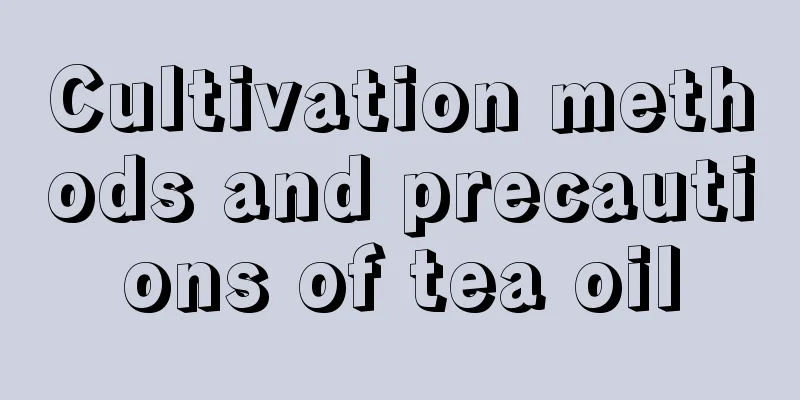Cultivation methods and precautions of tea oil

1. Maintenance methods1. Soil: Camellia oleifera is an easy-to-grow plant and does not require high soil quality. Generally, you can prepare thicker acidic soil. Loose and fertile soil will be more conducive to its growth. 2. Water: It has a higher demand for water, especially during its vigorous growth period. Adequate water supply can promote its better growth. However, the amount of water should not be too sufficient, as too much water will affect its growth. 3. Nutrients: During its growth period, nitrogen fertilizer is often used when fertilizing. Nitrogen fertilizer can provide more nutrients to plants, making them grow stronger and stronger. 4. Light: Adequate light is essential during maintenance, and full-sun exposure is suitable. If insufficient light is absorbed, the branches and leaves will grow more, but the fruits produced will be very few, and the oil yield will be greatly reduced. 2. Breeding techniques1. Pruning: In order to ensure the germination rate during planting, the seedlings will be planted close together. When they grow to about 20 cm, they need to be simplified, leaving only one out of three. The withered branches and leaves should also be pruned appropriately to promote their absorption of nutrients. 2. Reproduction: Cuttings are often used, and the best time is summer. Select strong and full branches, cut them into cuttings about four centimeters long, and dip them in some ABT rooting powder. When cuttings, keep the cuttings upright and the row spacing at about ten centimeters. Finally, water them and provide shade. The cuttings will take root and sprout in about 60 days after cuttings. 3. Problem diagnosis and treatment1. Root rot: The most common disease in oil-tea cultivation is root rot. If not prevented and controlled in time, the roots will completely rot and even die. Use diluted copper sulfate to spray the roots and soil for disinfection. 2. Weevil: Weevil is very harmful to the growth of tea oil. You can dilute the insect crystal with water and spray it to kill it. IV. Other issues1. How to survive the winter: It likes to grow in a mild environment and is afraid of cold temperatures. During the cultivation period, it is best to control the temperature at around 16 to 18 degrees Celsius. Too low temperature or frost will cause the flowers and fruits of the plant to wither. 2. Is it edible: Its seeds can be pressed into oil. The pressed oil is clear in color and fragrant in taste, and can be used as cooking oil. |
<<: Chickpea cultivation methods and precautions
>>: Cultivation methods and precautions of rapeseed
Recommend
How to grow zebra flowers
1. Proper lighting It likes sunlight, but is afra...
Why Phalaenopsis orchids drop their buds
1. Excessive nitrogen fertilizer Cause: Phalaenop...
What trees can be used as bonsai in rural areas
1. Elm This tree species is relatively common, wi...
Will bougainvillea die if its leaves fall off? Can I prune it if only the leaves fall off?
1. Will fallen leaves die? Different degrees have...
Why doesn't Anthurium grow tall?
1. Lack of light Reason: Although Anthurium prefe...
What to do if the green radish grows too tall
What does the green radish look like when it grow...
Blue bean cultivation methods and precautions
1. Maintenance methods 1. Substrate selection: Bl...
What flowers can cause cancer?
The two sides of home plants Growing green plants...
When is the best time to plant persimmon trees?
Persimmon is a sweet fruit , and the persimmon tr...
Can I plant bamboo on the terrace?
Can bamboo be planted on the terrace? Bamboo can ...
How to grow geraniums in summer? Can they be pruned?
1. How to raise in summer 1. Soil: It is best to ...
How to reproduce Euonymus
Seed propagation of Euonymus When propagating, Eu...
Does geranium prefer shade or sun?
Does geranium prefer shade or sun? Geranium is ve...
Planting time and method of honeysuckle
Planting time of honeysuckle The right time shoul...
What to do if plum blossom leaves turn yellow
1. Reduce watering: Reason: Plum blossoms are rel...









